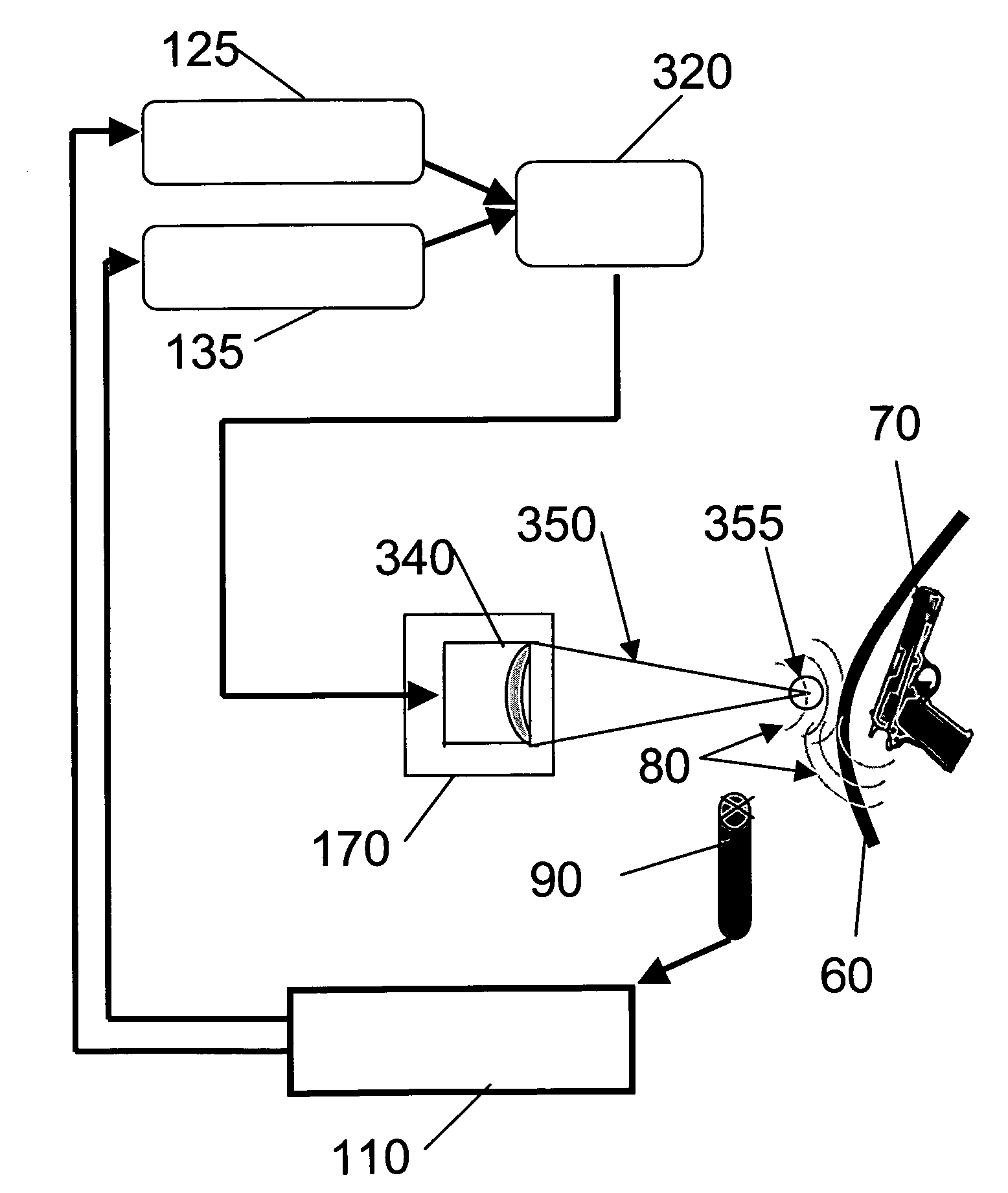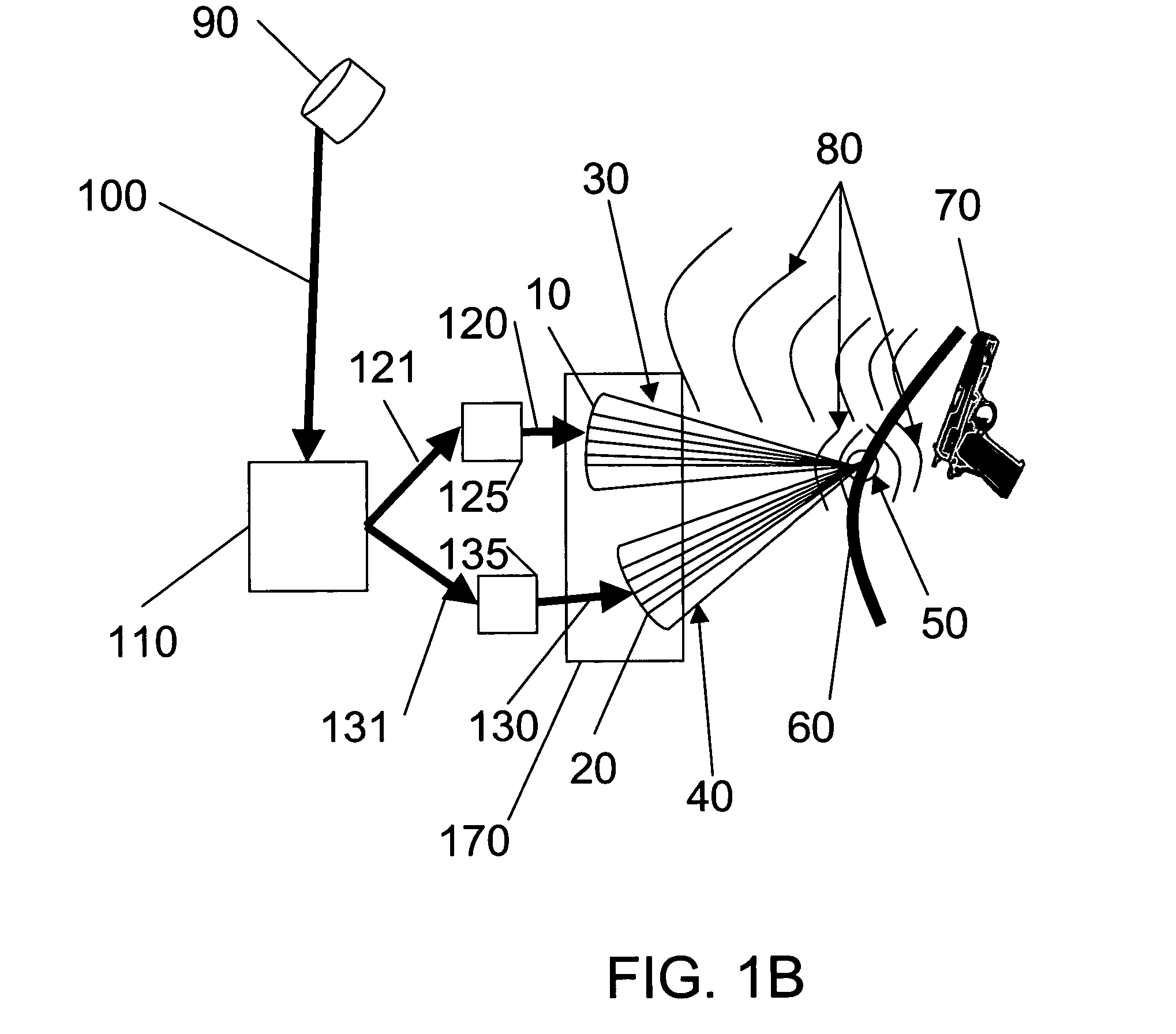Acoustic concealed item detector
a concealed item and detector technology, applied in the field of concealed item detection, can solve the problems of ultrasonic waves that are typically difficult to penetrate difficult to detect concealed items behind fabric or material-covered targets or suspect areas, etc., and achieve the effect of accurately interrogating a person and better detecting clothing
- Summary
- Abstract
- Description
- Claims
- Application Information
AI Technical Summary
Benefits of technology
Problems solved by technology
Method used
Image
Examples
Embodiment Construction
[0050]Non-linear acoustics can be better understood physically by modeling the transmission medium and including the effect of the acoustic pressure on the density. For most applications considered here, the transmission medium is a gas, most typically air.
[0051]The density, ρ, of the transmission medium depends on the acoustic environment:
ρ=ρ0(1+δ)
where ρ0 is the static density and δ is the incremental increase in density produced by the acoustic wave.
[0052]The acoustic pressure is then
P=ρ0cA(1+δ),
where c is the acoustic propagation velocity and A is the “particle velocity” that a small element within the transmission medium sees when in the presence of an acoustic wave.
[0053]For two interacting waves of sinusoidal excitation of frequencies f1 and f2 with corresponding wave-numbers k1 and k2:
A=A1 sin(2πf1t−k1x)+A2 sin(2πf2t−k2x).
Therefore, the dynamic pressure is expressed as:
P=ρ0c[A1 sin X+A2 sin Y]+ρ0cδ0[A1 sin X +A2 sin Y]2,
where X and Y are the corresponding angular arguments: ...
PUM
 Login to View More
Login to View More Abstract
Description
Claims
Application Information
 Login to View More
Login to View More - R&D
- Intellectual Property
- Life Sciences
- Materials
- Tech Scout
- Unparalleled Data Quality
- Higher Quality Content
- 60% Fewer Hallucinations
Browse by: Latest US Patents, China's latest patents, Technical Efficacy Thesaurus, Application Domain, Technology Topic, Popular Technical Reports.
© 2025 PatSnap. All rights reserved.Legal|Privacy policy|Modern Slavery Act Transparency Statement|Sitemap|About US| Contact US: help@patsnap.com



